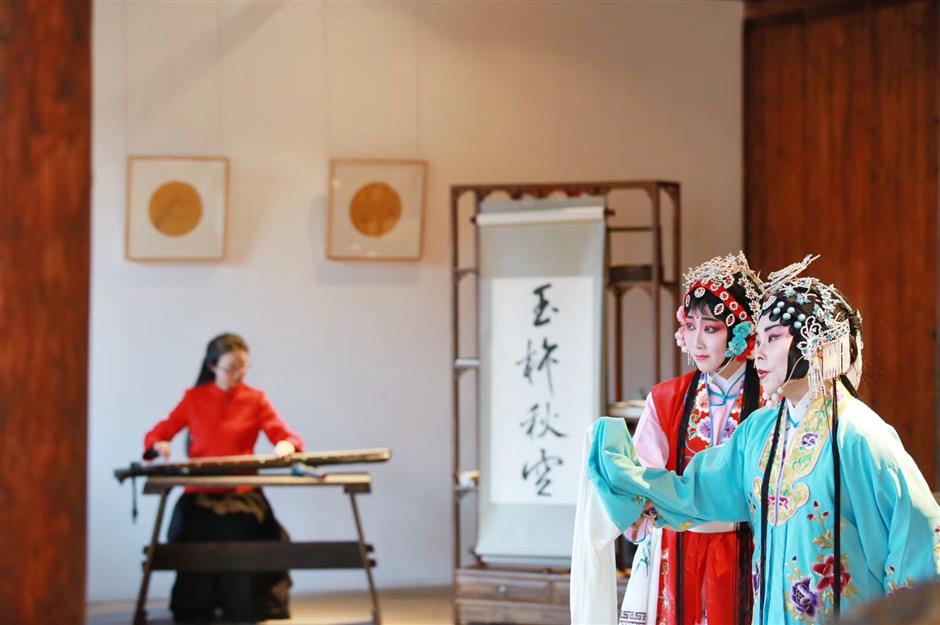'Hidden' Luo Mansion now a model for reviving history
After months of trial operation, the centuries-old Luo Mansion has officially opened to the public as a free gallery and activity center as part of the Hangzhou government’s efforts to protect and revive historic structures.
The mansion on the outskirts of Jianggan District had been hidden by other developments — many locals didn’t even know it was there.
The building is typical of the traditional Jiangnan (south of the lower reaches of the Yangtze River) style — white walls and black-tiled roofs.
Without classic engraved rafters and sculptured beams, it combines the Hui Muslim-style characteristics with Hangzhou folk houses.
The mansion was shaped as the Chinese character 휑 (sun or day) with buildings and high walls enclosing two patios. Rainwater flowed along the roofs and was collected in pottery vats in the patios for daily use.
In addition to rainfall, well water was another source for ancient Hangzhou citizens, since the main Qiantang River was too muddy to drink.
And wells mean endless fortune according to feng shui. So each patio had a well for use and to be auspicious.
The wealthy Luo family established the mansion during the Qing Dynasty (1644-1911) when the area was a center of the booming silk and medicinal herb trades. Herbs were dried in the mansion and then transported around the country via the Beitang River.
After a turbulent family history, the Luos sold the mansion. It was later taken over by the local government and used successively as a pharmacy, school and factory.
It was also a dormitory for a textile mill and accommodated 17 families. These workers lived here for more than 40 years.

Yueju Opera performance is staged at Luo Mansion to allure nearby residents.
Many historic buildings have been demolished during urban development and the Luo Mansion is one of the few to survive.
It has survived and been preserved largely due to the efforts of Wang Yunliang, director of the cultural station of the Pengbu Street Neighborhood.
Wang and his colleagues wrote a letter to appeal for the government’s protection by spelling out the historical value of the mansion.
The restoration sparked fierce debate and at one stage the government planned to relocate the building, but ran into opposition from architects.
The government eventually decided to restore the mansion in a six-month project and changed the construction plan of the surrounding neighborhood in keeping with the style of the mansion.
The restoration was completed in 2014 but the government turned down various businessmen who wanted to turn the building into a restaurant or fancy private club.
But a professional art organization, Bowen, offered a utilization plan last year.

Experiencing activities like woodblock printing turn out popular with visitors at the centuries-old Luo Mansion.
At first, the mansion was expected to be a venue for high-end exhibitions. After days of trial operation, organizers discovered it was not attractive to visitors because of its secluded location.
After consulting local residents, the building was turned into a popular “art experience” with activities such as tea ceremonies, operas, woodblock printing and flower arrangement.
The building is commercially viable and the operation is seen as a model for other historic places around the city.
When the Luo Mansion began its trial operation in May, the city government launched an official scheme to revive old buildings around the city and utilize them for the public benefit.
















